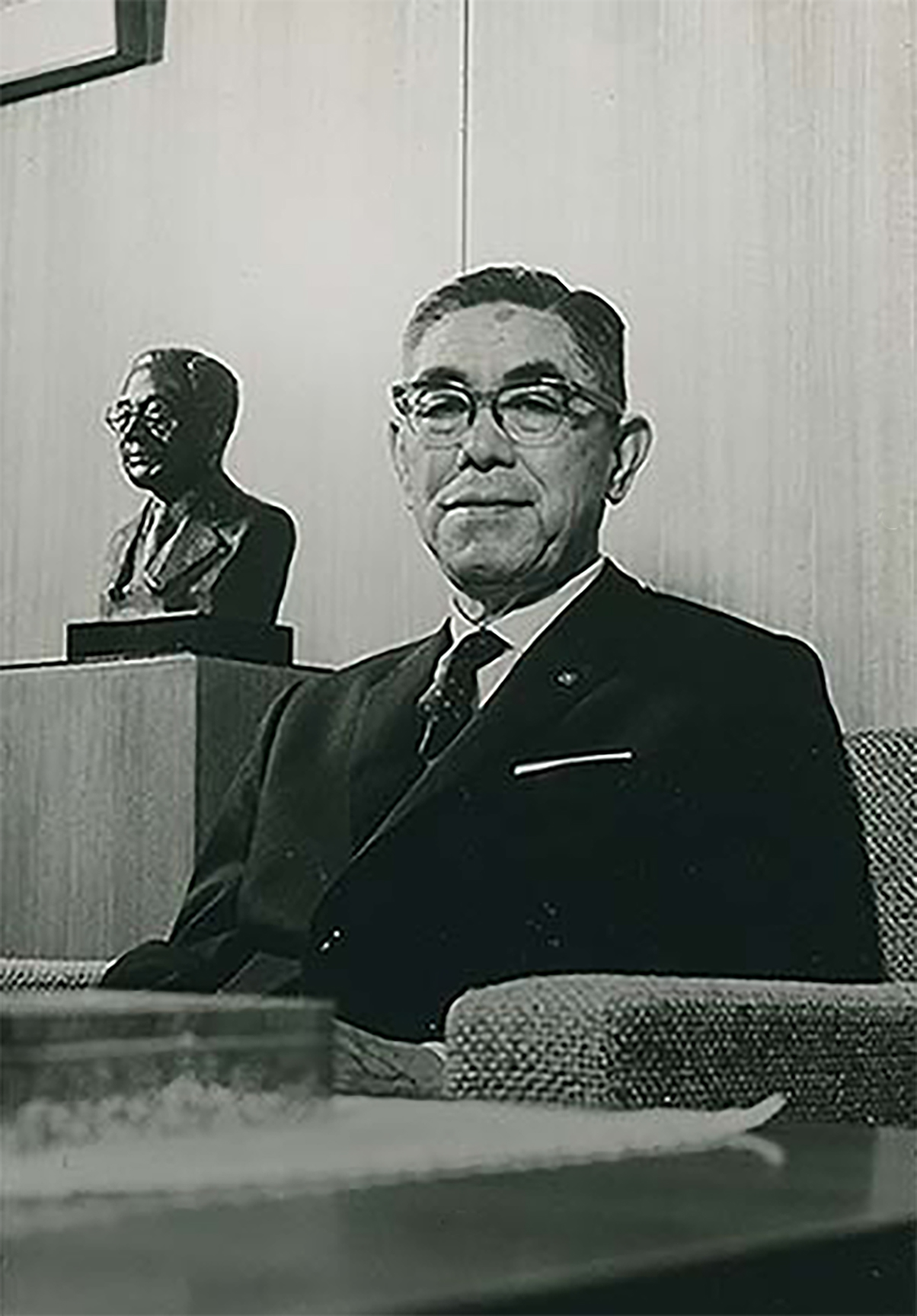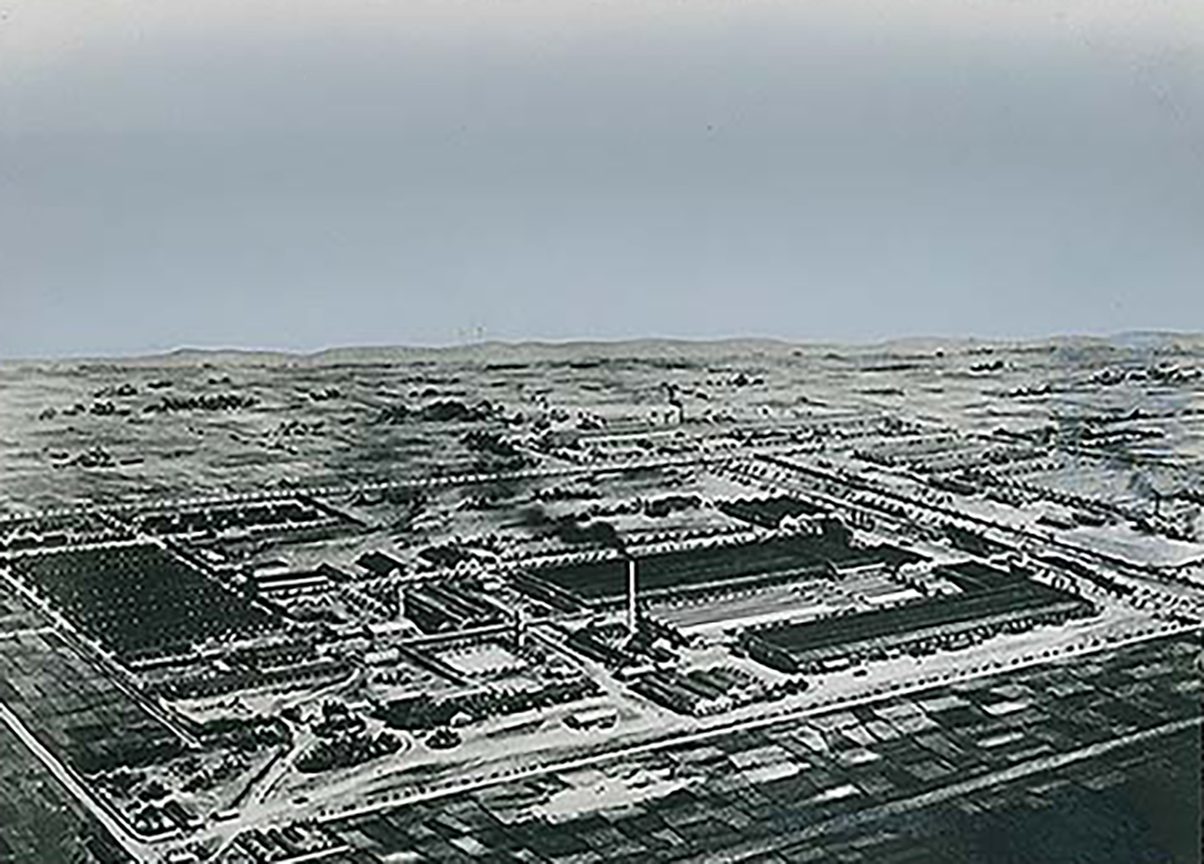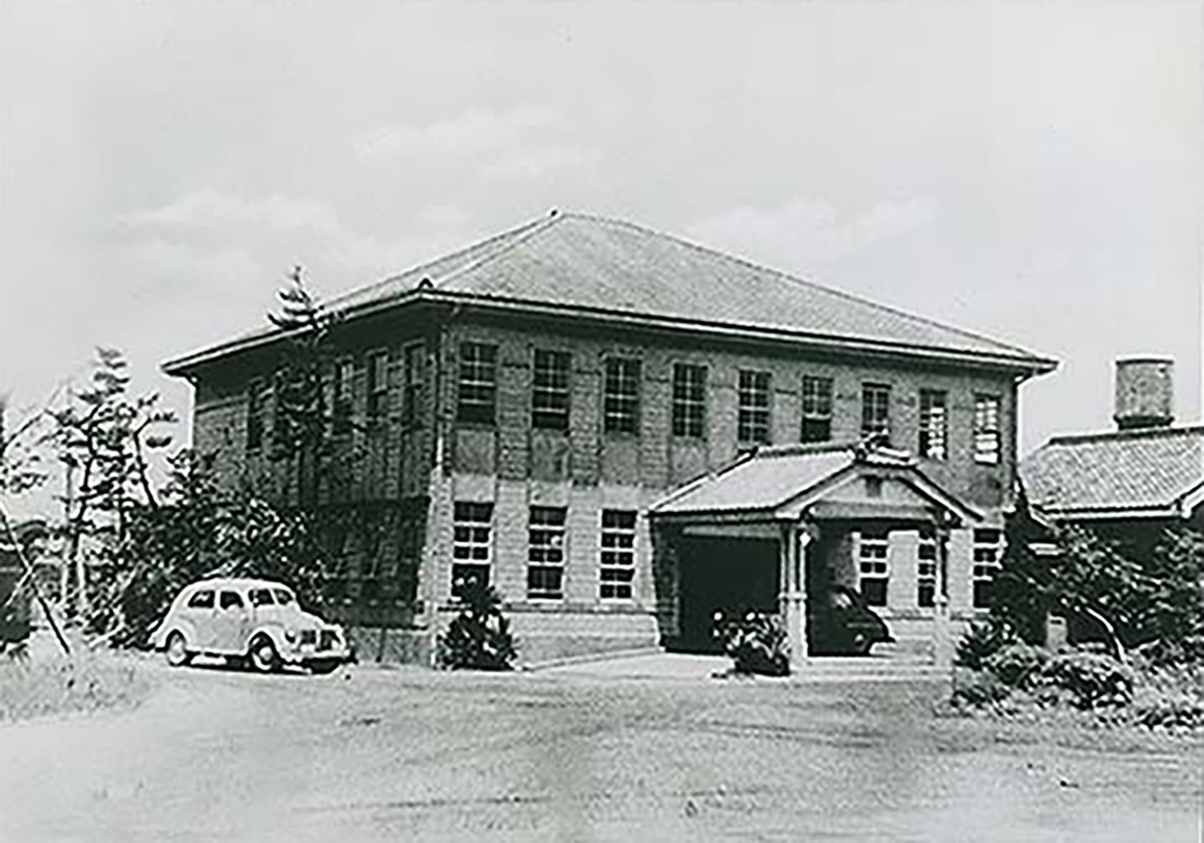1. A Difficult Launching
1949-
(1) The Resolve to Establish
- 1949
- In 1949, Nippondenso was founded. The first president, Torao Hayashi, was advised by Kiichiro Toyoda on the mindset required of a leader and was entrusted with the success of the venture, solidifying his resolve.

On December 16, 1949, “Nippondenso Co., Ltd.” was officially established. Based on the Enterprise Reconstruction and Reorganization Act, the electrical components factory of Toyota Motor Corporation was separated and became an independent entity. The new company had a capital of 15 million yen and employed 1,445 people. Torao Hayashi was appointed as the president, with Takaichi Suzuki, Tatsuo Iwatsuki, and Takeaki Shirai as directors, and Eizo Imura as the auditor.
Reference:Organizational Chart at the Time of Separation and Independence
- Deep DiveFounding Directors and Auditors
- At the time of our company's founding, the directors and auditors were handpicked by Kiichiro Toyoda, who envisioned the independence of the electrical components division. The selected team was nothing short of exceptional, ensuring that the foundation was laid by some of the most capable individuals.
Takaichi Suzuki had been a pillar of support for the electrical components technical division since the days of Toyoda Automatic Loom Works.
Tatsuo Iwatsuki joined the predecessor of the Kariya headquarters factory, the “Toyota Motor Corporation Electrical Components Factory,” in August 1948 as the top administrative officer. He also served as the deputy plant manager, overseeing general management.
Takeaki Shirai had been involved in engine development under Kiichiro's direction even before the automotive division of Toyoda Automatic Loom Works was established.
Eizo Imura joined Toyota Motor Corporation and was later dispatched to North China Automotive Industries in Tianjin, China. Following the end of the war, he returned to Toyota Motor Corporation and was assigned to the electrical components factory.


Torao Hayashi, who became the first president, was originally a loom technician. By his own admission, he was a novice in automotive parts, but he chose to take on this new challenge after being approached by Kiichiro Toyoda.
Before the separation, Hayashi was called by Kiichiro, who conveyed his thoughts on the importance of the business's independence: “Electrical components are a difficult job that requires a focus on performance. You must make a great effort to produce excellent products. If this is done merely as a division of Toyota's Kariya plant, there will inevitably be a sense of complacency and a lack of serious competitive spirit. By separating and becoming independent, competing with many other companies, you will be driven to make serious efforts and produce high-quality products at lower costs.”
Furthermore, Kiichiro provided guidance and encouragement on the mindset of a leader: “Independence means not only supplying Toyota but also other automakers. You must create products that can be sold to them, thus contributing to the entire Japanese automotive industry. Approach this with that spirit.”
Kiichiro also emphasized the importance of maintaining credibility: “Nippondenso has no social credibility on its own, so it must start with Toyota's credibility. As long as you operate under Toyota's credibility, you must not undermine it. I would like you to refrain from using the Toyota name for your company.”
Reflecting on this, Hayashi later said: “While these words were natural for the president of Toyota Motor Corporation, they were unforgettable encouragement for us. We remain grateful to President Kiichiro for helping us solidify our resolve.”
After the decision to separate and become independent, a debate among the executives centered on the company's name. Unable to use “Toyota,” various suggestions such as “Kariya Denso,” “Aichi Denso,” and “Tokai Denso” were proposed. However, these names projected a strong local company image. Eventually, a suggestion emerged: “Let’s think of the company as one that can expand its sales channels beyond Toyota and make strides internationally.” This ambition resonated with the executives, leading to the decision to name the company “Nippondenso.”
Thus, the company embarked on its journey.